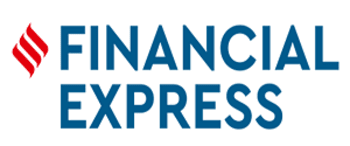The United Kingdom medical oxygen concentrator market is a crucial component of the nation's healthcare framework, addressing the needs of individuals suffering from respiratory ailments. With an increasing prevalence of chronic respiratory diseases such as Chronic Obstructive Pulmonary Disease (COPD), asthma, and sleep apnea, the demand for medical oxygen concentrator s has seen a steady rise. The aging population further accentuates this demand, as respiratory conditions become more common with age. In response, the UK government, through the Medicines and Healthcare products Regulatory Agency (MHRA), has implemented stringent policies to regulate the quality and safety of medical devices, ensuring that medical oxygen concentrator s meet high standards. These regulations have fostered trust and confidence among consumers and healthcare providers. Furthermore, the National Health Service (NHS) has played a pivotal role in making medical oxygen concentrator s accessible to the public, particularly during the COVID-19 pandemic when respiratory support systems were in high demand. Historically, the market has evolved from traditional oxygen delivery systems to more advanced and patient-friendly devices. Portable medical oxygen concentrator s, designed to provide mobility and convenience, have become increasingly popular. As the UK continues to prioritize patient-centric care, the market for medical oxygen concentrator s is poised for further growth, driven by innovations in respiratory therapy equipment and an emphasis on at-home healthcare solutions.
According to industry reports “ United Kingdom medical oxygen concentrator market overview,2030”, the market is projected to grow at a Compound Annual Growth Rate (CAGR) of over 5.5% from 2025 to 2030. This growth is fueled by multiple factors, including the increasing prevalence of respiratory conditions and heightened awareness of the benefits of oxygen therapy. Technological advancements are reshaping the market landscape, with new medical oxygen concentrator s offering enhanced portability, energy efficiency, and user-friendly features. The integration of smart technologies, such as real-time data sharing and remote monitoring, has transformed medical oxygen concentrator s into connected devices, enabling healthcare providers to track patient conditions more effectively. Manufacturers are also focusing on sustainability, designing devices that consume less energy and incorporate recyclable materials. Opportunities abound for both established players and emerging companies, as the demand for innovative and cost-effective solutions continues to grow. Key market participants such as Philips Healthcare, Invacare Corporation, and Inogen Inc. dominate the landscape due to their robust product portfolios and extensive distribution networks. Meanwhile, smaller local firms are gaining traction by offering customized solutions and catering to specific patient needs. The NHS and private healthcare providers serve as significant customers, ensuring a steady demand for these devices.
What's Inside a Bonafide Research`s industry report?
A Bonafide Research industry report provides in-depth market analysis, trends, competitive insights, and strategic recommendations to help businesses make informed decisions.
Download SampleThe UK medical oxygen concentrator market is segmented by product type into portable and stationary medical oxygen concentrator s. Portable medical oxygen concentrator s are experiencing heightened demand due to their compact, lightweight designs that provide greater mobility for patients. These devices are particularly popular among active individuals who wish to maintain a normal lifestyle while managing respiratory conditions. Patients benefit from features such as battery-operated functionality and travel-friendly designs, making portable concentrators ideal for home care and on-the-go use. Conversely, stationary medical oxygen concentrator s are primarily used in hospitals and long-term home care settings, where they deliver higher oxygen flow rates suitable for patients with severe respiratory conditions. Stationary devices remain indispensable for critical care and long-term oxygen therapy. By technology, medical oxygen concentrator s are categorized into pulse flow and continuous flow systems. Pulse flow concentrators deliver oxygen in synchronized bursts based on the patient’s breathing patterns, making them more energy-efficient and suitable for portable use. These systems optimize oxygen delivery and are preferred for intermittent use during daily activities. Continuous flow medical oxygen concentrator s, on the other hand, provide a steady supply of oxygen regardless of the patient’s breathing patterns. They are essential for individuals with severe respiratory conditions who require consistent oxygen levels, particularly during sleep or periods of rest.
The application segmentation of the UK medical oxygen concentrator market highlights its use across various respiratory conditions. COPD, asthma, and respiratory distress dominate the demand due to their prevalence among the population. The rise in conditions such as sleep apnea and interstitial lung diseases has further broadened the application scope. Post-operative care and management of complex respiratory conditions like cystic fibrosis also contribute significantly to market growth. The versatility of medical oxygen concentrator s makes them a valuable tool in both acute and chronic care scenarios. End-user segmentation includes hospitals and clinics, home care settings, and ambulatory surgical centers. Hospitals and clinics account for the largest share of the market, leveraging high-capacity medical oxygen concentrator s for inpatient and critical care. Home care settings represent a rapidly growing segment, driven by the increasing preference for personalized healthcare and the affordability of portable devices. Home care medical oxygen concentrator s empower patients to manage their conditions effectively within the comfort of their homes, enhancing their quality of life. Ambulatory surgical centers and physician offices, though smaller in market share, utilize medical oxygen concentrator s for outpatient procedures and ongoing respiratory therapy. The United Kingdom medical oxygen concentrator market is positioned for substantial growth, driven by advancements in medical technology, supportive government initiatives, and increasing healthcare awareness. Manufacturers that focus on innovation, sustainability, and affordability are likely to succeed in this competitive landscape. The integration of smart features, such as remote monitoring and connectivity, will continue to shape consumer preferences and improve patient outcomes. With a strong regulatory framework and a commitment to enhancing respiratory care, the UK market is well-equipped to meet the evolving needs of its population, ensuring access to high-quality oxygen therapy solutions.
Considered in the report
• Historic year: 2019
• Base year: 2024
• Estimated year: 2025
• Forecasted year: 2030
Aspects covered in the report
• Market Size by Value for the period (2019-2030F)
• Market Share by Product
• Portable Oxygen Concentrator
• Stationary Oxygen Concentrator
• Oxygen Cylinders
• Market Share by Technology
• Continuous Flow
• Pulse Flow
• Market Share by End User
• Home Care
• Non-Home Care
• Various drivers and challenges
• On-going trends and developments
• Top profiled companies
• Strategic recommendation
The approach of the report:
We keep an eye on evolving markets and try to evaluate the potential of the products and services. If we find the market interesting, we start working on it and create the desired table of content, considering all aspects of the business. We start by creating separate questionnaires for C-level executives, national/regional sales personnel, company owners, dealers, distributors, and end-users. Once the questionnaires have been finalized, we start collecting the primary data (mostly through phone calls) and try to understand the market dynamics regionally or tier-wise. This process gives us in-depth details of the market, including all present companies, the top-performing products with reasons why they dominate; we get the details of new players and their innovative approaches; market trends; dynamics; and all the small details of the market. After the collection of primary inputs, we then cross-check the same with secondary sources that include associations, trade journals, annual reports, paid databases, newspapers, magazines, press releases, government sources, etc. From this, we get a rough estimate of the market and start checking existing product price variants, trade, production, raw material scenarios, policies and regulatory landscape, etc. Then, to finalize the market, we start collecting financials of each player present in the market, including limited, private limited, and LLPs. Moreover, we perform cross-industry and cross-region analysis of the product, and based on collected primary inputs and using statistical modeling, we start forecasting the market. We follow our forecasting algorithm, which is unique for each product but gives more weight age to primary inputs. At the same time, the content team starts preparing company profiles, market dynamics, market trends, five forces, PEST analysis, etc. Once the data is verified by the data expert, the team (primary team, content team, and data team) together crosscheck the segmentations, validate the market, and then the designing team starts plotting the graphs. Once the file is ready, the content team completes the report and makes sure that all the discussed points have been covered and provides their valuable inputs in the form of strategic recommendations for new as well as existing players. The QC team then checks the overall report that includes spell check, data verification, and makes the same dispatch ready and error-free.
Intended Audience
This report can be useful to industry consultants, manufacturers, suppliers, associations & organizations related to the Medical Device industry, government bodies, and other stakeholders to align their market-centric strategies. In addition to marketing & presentations, it will also increase competitive knowledge about the industry.
Table of Contents
- 1. Executive Summary
- 2. Market Structure
- 2.1. Market Considerate
- 2.2. Assumptions
- 2.3. Limitations
- 2.4. Abbreviations
- 2.5. Sources
- 2.6. Definitions
- 2.7. Geography
- 3. Research Methodology
- 3.1. Secondary Research
- 3.2. Primary Data Collection
- 3.3. Market Formation & Validation
- 3.4. Report Writing, Quality Check & Delivery
- 4. United Kingdom (UK) Macro Economic Indicators
- 5. Market Dynamics
- 5.1. Market Drivers & Opportunities
- 5.2. Market Restraints & Challenges
- 5.3. Market Trends
- 5.3.1. XXXX
- 5.3.2. XXXX
- 5.3.3. XXXX
- 5.3.4. XXXX
- 5.3.5. XXXX
- 5.4. Covid-19 Effect
- 5.5. Supply chain Analysis
- 5.6. Policy & Regulatory Framework
- 5.7. Industry Experts Views
- 6. United Kingdom (UK) Medical Oxygen Concentrator Market Overview
- 6.1. Market Size By Value
- 6.2. Market Size and Forecast, By Product Type
- 6.3. Market Size and Forecast, By Technology
- 6.4. Market Size and Forecast, By End User
- 6.5. Market Size and Forecast, By Region
- 7. United Kingdom (UK) Medical Oxygen Concentrator Market Segmentations
- 7.1. United Kingdom (UK) Medical Oxygen Concentrator Market, By Product Type
- 7.1.1. United Kingdom (UK) Medical Oxygen Concentrator Market Size, By Portable Oxygen Concentrators, 2019-2030
- 7.1.2. United Kingdom (UK) Medical Oxygen Concentrator Market Size, By Stationary Oxygen Concentrators, 2019-2030
- 7.2. United Kingdom (UK) Medical Oxygen Concentrator Market, By Technology
- 7.2.1. United Kingdom (UK) Medical Oxygen Concentrator Market Size, By Pulse Flow, 2019-2030
- 7.2.2. United Kingdom (UK) Medical Oxygen Concentrator Market Size, By Continuous Flow, 2019-2030
- 7.3. United Kingdom (UK) Medical Oxygen Concentrator Market, By End User
- 7.3.1. United Kingdom (UK) Medical Oxygen Concentrator Market Size, By Hospitals & clinics, 2019-2030
- 7.3.2. United Kingdom (UK) Medical Oxygen Concentrator Market Size, By Home care settings, 2019-2030
- 7.3.3. United Kingdom (UK) Medical Oxygen Concentrator Market Size, By Ambulatory surgical centers & physician offices, 2019-2030
- 7.4. United Kingdom (UK) Medical Oxygen Concentrator Market, By Region
- 7.4.1. United Kingdom (UK) Medical Oxygen Concentrator Market Size, By North, 2019-2030
- 7.4.2. United Kingdom (UK) Medical Oxygen Concentrator Market Size, By East, 2019-2030
- 7.4.3. United Kingdom (UK) Medical Oxygen Concentrator Market Size, By West, 2019-2030
- 7.4.4. United Kingdom (UK) Medical Oxygen Concentrator Market Size, By South, 2019-2030
- 8. United Kingdom (UK) Medical Oxygen Concentrator Market Opportunity Assessment
- 8.1. By Product Type, 2025 to 2030
- 8.2. By Technology, 2025 to 2030
- 8.3. By End User, 2025 to 2030
- 8.4. By Region, 2025 to 2030
- 9. Competitive Landscape
- 9.1. Porter's Five Forces
- 9.2. Company Profile
- 9.2.1. Company 1
- 9.2.1.1. Company Snapshot
- 9.2.1.2. Company Overview
- 9.2.1.3. Financial Highlights
- 9.2.1.4. Geographic Insights
- 9.2.1.5. Business Segment & Performance
- 9.2.1.6. Product Portfolio
- 9.2.1.7. Key Executives
- 9.2.1.8. Strategic Moves & Developments
- 9.2.2. Company 2
- 9.2.3. Company 3
- 9.2.4. Company 4
- 9.2.5. Company 5
- 9.2.6. Company 6
- 9.2.7. Company 7
- 9.2.8. Company 8
- 10. Strategic Recommendations
- 11. Disclaimer
Table 2: United Kingdom (UK) Medical Oxygen Concentrator Market Size and Forecast, By Product Type (2019 to 2030F) (In USD Million)
Table 3: United Kingdom (UK) Medical Oxygen Concentrator Market Size and Forecast, By Technology (2019 to 2030F) (In USD Million)
Table 4: United Kingdom (UK) Medical Oxygen Concentrator Market Size and Forecast, By End User (2019 to 2030F) (In USD Million)
Table 5: United Kingdom (UK) Medical Oxygen Concentrator Market Size and Forecast, By Region (2019 to 2030F) (In USD Million)
Table 6: United Kingdom (UK) Medical Oxygen Concentrator Market Size of Portable Oxygen Concentrators (2019 to 2030) in USD Million
Table 7: United Kingdom (UK) Medical Oxygen Concentrator Market Size of Stationary Oxygen Concentrators (2019 to 2030) in USD Million
Table 8: United Kingdom (UK) Medical Oxygen Concentrator Market Size of Pulse Flow (2019 to 2030) in USD Million
Table 9: United Kingdom (UK) Medical Oxygen Concentrator Market Size of Continuous Flow (2019 to 2030) in USD Million
Table 10: United Kingdom (UK) Medical Oxygen Concentrator Market Size of Hospitals & clinics (2019 to 2030) in USD Million
Table 11: United Kingdom (UK) Medical Oxygen Concentrator Market Size of Home care settings (2019 to 2030) in USD Million
Table 12: United Kingdom (UK) Medical Oxygen Concentrator Market Size of Ambulatory surgical centers & physician offices (2019 to 2030) in USD Million
Table 13: United Kingdom (UK) Medical Oxygen Concentrator Market Size of North (2019 to 2030) in USD Million
Table 14: United Kingdom (UK) Medical Oxygen Concentrator Market Size of East (2019 to 2030) in USD Million
Table 15: United Kingdom (UK) Medical Oxygen Concentrator Market Size of West (2019 to 2030) in USD Million
Table 16: United Kingdom (UK) Medical Oxygen Concentrator Market Size of South (2019 to 2030) in USD Million
Figure 2: Market Attractiveness Index, By Product Type
Figure 3: Market Attractiveness Index, By Technology
Figure 4: Market Attractiveness Index, By End User
Figure 5: Market Attractiveness Index, By Region
Figure 6: Porter's Five Forces of United Kingdom (UK) Medical Oxygen Concentrator Market
Related Reports
 We are friendly and approachable, give us a call.
We are friendly and approachable, give us a call.





.png)









